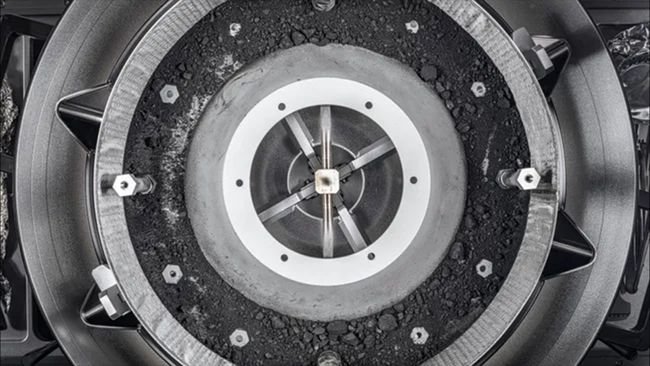Rock samples confirm the presence of hydrated minerals and organic compounds key to the development of life
Nearly four years after NASA's OSIRIS-Rex spacecraft collected a sample from the asteroid Bennu, scientists are finally revealing the intriguing composition of its cosmic rock. According to recent results, Bennu contains a mineral called magnesium phosphate. These bright white particles are a rare find in astromaterials, scientists say.
«No wonder we initially thought it might be trash»,— said Jessica Barnes, assistant professor at the Lunar and Planetary Laboratory (LPL), who is leading the analysis of phosphates in the sample.
Speaking at the Lunar and Planetary Science Conference (LPSC) in Texas last week, Barnes said there are no obvious chemical analogues of this mineral on Earth — he is either too fragile to survive the fall to Earth or disappears soon after. Its presence in the Bennu sample can be used to infer various episodes of geological activity on Bennu's parent body, she said.
Samples also show widespread presence of glycine — the simplest amino acid and an essential ingredient in proteins, as well as other water-bearing minerals including carbonates, sulfites, olivine and magnetite. All this is evidence that Bennu's parent body witnessed several water-related episodes before its fragments merged into Bennu.
Other scientists studying the samples discovered abundant water-bearing compounds called phyllosilicates, as well as a rich collection of other organic and hydrated minerals. Phyllosilicates, which are structurally related to water in meteorites, may have been the cradle of organics and water that scientists suspect were brought to Earth early in its history.
The sample obtained from Bennu in 2020 by NASA's OSIRIS-REx mission was returned to Earth in a capsule on September 24, 2023. A day later, it was taken for analysis to NASA's Johnson Space Center in Houston, where a team of scientists began a preliminary study of the material that remained outside the reservoir. Two screws on the lid of the container prevented access to the bulk of the collected sample until January, when scientists recorded 121.6 grams of material collected, double the original estimate.
In multiple discussions at the LPSC, the mission team reported that the fragments cataloged so far also have different textures, hydrated minerals, and evidence of space weathering, as expected from an airless rock several millennia old.
Unlike most meteorites, whose surfaces are altered by years of exposure to Earth's air when discovered, Bennu's fragments are the most pristine that have ever been in the hands of scientists.
Many of the cataloged Bennu specimens are rocks with a «rough texture, reminiscent of sandpaper», — said team member Andrew Ryan, an LPL researcher at the University of Arizona. The stone is 3.5 centimeters wide and weighs 6.6 grams — it is «the largest loot ever recovered from the surface of Bennu» — Ryan said so, pointing to the latest 3D scans of the stone.
Most of the measured minerals confirm numerous predictions made from remote sensing data collected by OSRISIS-REx as it approached Bennu.
So far, the analysis is consistent with the main theory that Bennu broke off from a much larger asteroid some 2 to 700 million years ago. For example, recent analysis shows that Bennu's surface is littered with impact fragments, which are fragments of rock loosely held together, like pebbles in concrete.
«These fragments probably did not form on Bennu», — said McCoy, who is leading the study of the fragments. It is still unclear exactly when they formed.

